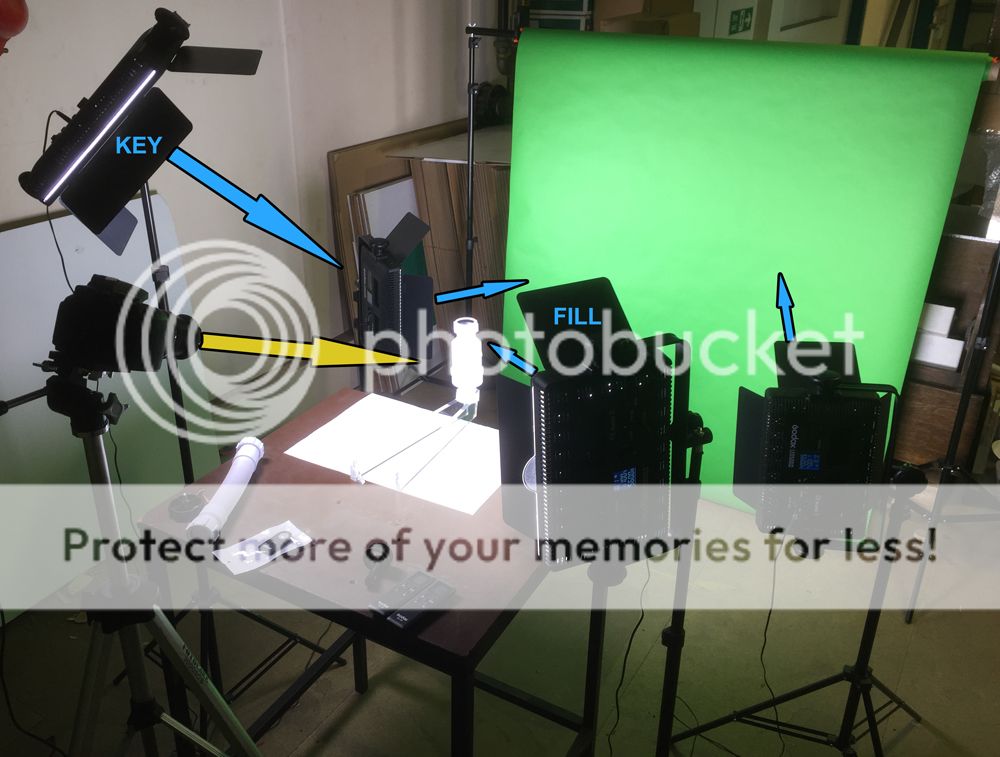epatsellis
No longer a newbie, moving up!
- Joined
- Apr 15, 2008
- Messages
- 543
- Reaction score
- 25
- Can others edit my Photos
- Photos NOT OK to edit
Good to know; colour-casting is a definite problem with lower-end gear, but it's generally easily fixed in post. As for the output, 250w/s is plenty for the work you're doing. I often do 2-3 light full-body portraits using only a single 200 w/s power pack.Just be aware I think those give a blueish color so you'll have to deal with customizing your white balance.Would you mind giving your opinion on this setup please? seems to good to be true - the price isnt the most important thing for the company but i was also considering this one for my own use at home for ebay photos etc....
https://www.amazon.co.uk/Neewer-Pro...1_3?ie=UTF8&psc=1&refRID=YRXZJQR2TSFNXFVCXX4V
Maybe, maybe not...
As a point of reference, for product work I start with 1600 w/s pack and a single head in a large softbox, it's not unusual for me to have to use a double head and two packs to get enough light on set at times. Target aperture for a small camera (e.g. 35mm and smaller) is ~f11 to f16. One of the best lenses that is inexpensive for this would be a 55 f2.8 or f3.5 Micro-Nikkor. I prefer a much longer lens for product work, on 4x5 I use a 210-300mm lens (480-600mm on 8x10), so on 35mm, that's be close to 90-100mm, there is less geometric distortion, more working room for flags, etc. Ditch the zoom lens, use a fixed focus lens, good tripod (or camera stand which is preferable, I use a fully kitted Cambo UST personally, Bogen makes a small stand as well) While you don't need a shooting table, they can help immensely when shooting many items.
Long objects aren't impossible to shoot and keep in focus, this is a 3 1/2 foot wide hydrostatic lawn mower transmission:

In this case, I shot with a Sinar view camera, lots of swing and a scan back with continuous HMI lighting, but the same basic concepts can be used with a small camera if you're willing to learn. (this was a test shot to determine scale and exposure, hence the marks on the left axle that haven't been cleaned off yet, and the final image is quite a bit brighter)
In my studio, high key shooting requires lots of light, high DOF requires small apertures which will require lots of light. A softbox 2-3x the size of the object you're shooting should result in a shadowless background if propped up 1/2 to 1" off the table. Best bet for a background is matte white Formica or any similar laminate. Fill cards and flags as needed to model the shape of the object. Cleanliness is essential, when it looks absolutely spotless, clean it once more. For plastic items, dryer sheets work well for dissipating static charges. I'd ditch the "tent" or "cube" or whatever they're called these days. If you want to control light and image values, throwing light everywhere isn't the way to do it.
What is the purpose of the DOF calculator, exactly? In my experience it's one more thing that you'll spend way too much time on and never have it "click". Put the phone down and spend some time learning, it will serve you better in the long run.
Each image on the computer should be obvious what your DOF is, and if there is an adjustment to be made. (you are shooting tethered and proofing on a larger monitor, right????)
There's a simple way to fix color cast in shadows, btw, eliminate all other sources of light. Stray light will impact color balance in the shadows first.




![[No title]](/data/xfmg/thumbnail/42/42474-aa3cf1f7163a823d6f10558b262a4bc3.jpg?1734177002)


![[No title]](/data/xfmg/thumbnail/42/42475-965e641fd6a3f72e60d9f555233b0aab.jpg?1734177004)







